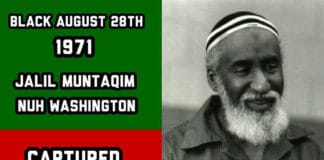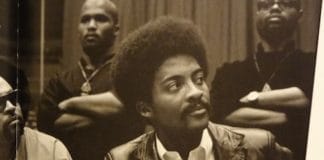Tags Charles Manson
Tag: Charles Manson
Jalil A. Muntaqim: The making of a movement
I would like to propose it is time to organize a new international campaign to persuade the U.N. International Jurists to initiate a formal investigation. This investigation would be based on discovering U.S. human rights violations as they pertain to our long-held political prisoners. I am proposing this campaign be organized under the slogan of “In the Spirit of Nelson Mandela,” as it is believed this slogan will resonate with progressives around the world. It will inspire them in international solidarity to join our efforts to persuade the U.N. International Jurists to initiate this call for a needed investigation.
Alprentice ‘Bunchy’ Carter ‘would have rode with Nat Turner’
Oct. 12 is the birthday of one of the most talented and promising young men martyred in the massive state repression against the Black Panther Party for Self Defense, Alprentice “Bunchy” Carter. Unlike Huey P. Newton, Bobby Seale, Eldridge Cleaver and George Jackson, Carter has almost been forgotten from the history of Africans in America except for diehards. Carter, then 26 (born Oct. 12, 1942), was assassinated on Jan. 17, 1969 in a Campbell Hall classroom at UCLA in Los Angeles.
Nurse fired for speaking out: ‘I am on a mission to...
Assigned to the Mental Health Crisis Bed (MHCB) unit, I found 80-plus patients suffering torture, sexual abuse and neglect. President Obama would recognize it as torture. The vast majority of victims were Black or Hispanic, all the abusers White. Cold, dark cells hold captives in isolated sensory deprivation – drugged, sick and in pain. Nurses prevented death only to prolong torment, sometimes for years. The number of patients suffering preventable deaths during “medical treatment” in CDCR facilities may exceed all legal executions nationwide.
Black August: Beyond 34 years of resistance
When the concept of Black August manifested in 1979, many thought it was simply a focus group protest growing out of the avoidable death of Khatari Gaulden on Aug. 1, 1978, in the San Quentin prison infirmary. Survival for Africans in California’s prison population of 20,000 inmates had to that point been recognized by some as a bit more than problematic.
We are willing to sacrifice ourselves to change our conditions
We all were willing to die in a hunger strike to get attention and changes to a flawed validation policy, where prisoners are kept in solitary confinement indefinitely by fabricated tales by prison informants and officers. So we are truly committed to seeing this out and sacrificing ourselves.
We dare to win: The reality and impact of SHU torture...
If this second hunger strike effort has taught us anything, it is that the power to transform an intransigent CDCR must come from the will of the people, from exercising your limitless power. Prison authorities were fully content to let us die this time and even modified their medical responses to maximize the chance of permanent injury or death to hunger strikers, which makes the broader aspects of this struggle so significant. Who dares to struggle? Who dares to win? We do, and we hope you do too. Join us! The power to shape history and the future of the society is in your hands.






